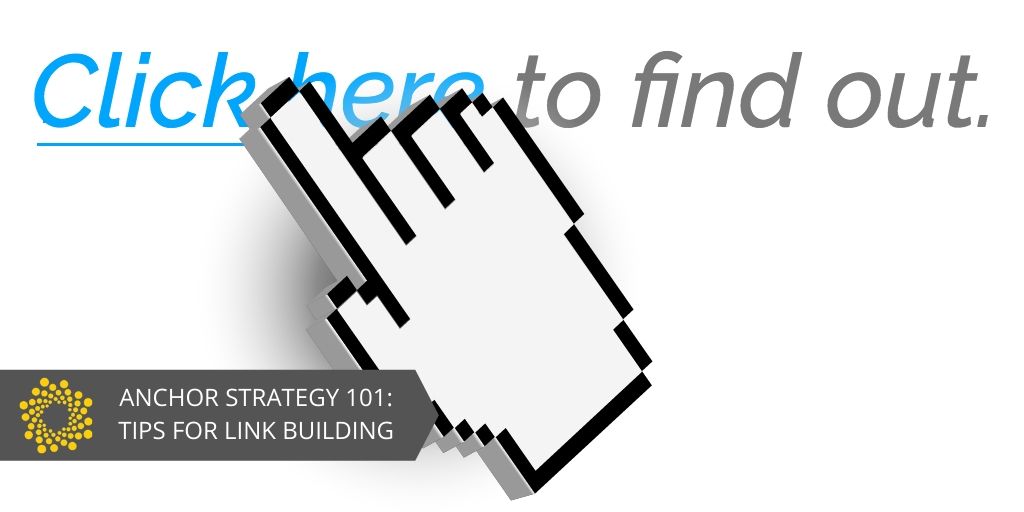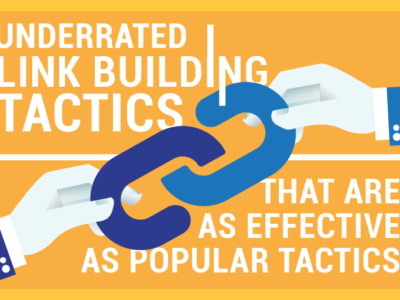A few years back, keyword usage was the name of the game.
If you wanted to rank high on a search engine’s results page (SERP), simply incorporating high performing keywords and phrases to your site’s content was the way to go. Since search engines would rank pages in terms of the number of times a keyword appears, SEO practitioners eventually abused this system by overusing keywords all across their websites.
This act is more commonly known as keyword stuffing and caused users at that time to end up landing on websites that didn’t really offer any valuable information. Nowadays, SEO algorithms are smarter than ever and have the capability to detect and penalize sites that make use of questionable tactics like these.
Even though search engine algorithm changes have caused a dynamic shift in the SEO landscape, link building remains as one of the most reliable methods you can use to drive organic traffic to your website.
Link building is like nurturing a relationship with a business partner.
To simplify things, if you link out to credible sources within your content, search engines will recognize that your content is relevant and reward you by improving your page’s authority. This also works the other way around. In the case that a site with high domain authority links your site, search engines will also see you as a reliable and authoritative figure in your industry.
When it comes to link building, search engines pay close attention to how you use anchor texts. Just like any other digital marketing methods, there’s a right and a wrong way to do things. Similar to keyword stuffing, search engines are on the lookout for black hat methods such as google bombing.
Having an effective strategy means optimizing your use of anchor text. If you want to get the most out of your link building campaigns, you need a link building strategy that encompasses the best modern practices.
To know how you can optimize your efforts, it’s important to review the different types of anchor texts.
The Types of Anchor Text
-
Exact-match
An anchor text is an exact-match if its keyword/keyphrase is the same as the page it is being linked to. (e.g. If your anchor text is anchor strategy and it links to a page about anchor strategy.)
-
Partial-match
A partial-match anchor text is one that includes a variation of the keyword to the linked page. (e.g. If your anchor text is best search engine marketing tactics and it links to a page about SEM.)
-
Generic
A word or phrase that is used as an anchor. This is usually in the form of a call to action. (e.g. “Contact us now”)
-
Naked Link
A URL that is posted directly as an anchor. (e.g. https://www.spiralytics.com/)
-
Branded
An anchor text that simply makes use of the site/brand’s name. (e.g. If your anchor text is Spiralytics and it leads to the brand’s website)
-
Images
If your content makes use of a linked image, Google will make use of the text contained in the image (meta tag) as its anchor text.
How to Optimize Your Anchor Strategy for Link Building
-
Stay Relevant and Don’t Overdo Things
For your anchor texts to work, they must always be relevant to your content.
If you’re targeting the keyword “link building”, it’s best to incorporate the linked text in an article that tackles the topic. While you’re in the process of writing, always get straight to the point and take your time to review so you don’t use links unnaturally. This will give your content better structure and will keep penalties at bay.
Pro tip: If you’re blogging about a complex topic, its best to anchor links to help your audience define terms. If your visitors want to learn more about something, they will most likely click a link if it provides the information they need.
-
Prioritize Quality Over Quantity
When it comes to improving your ranking, it’ll seldom come down to the number of pages that link to you.
Before you make an offer to link or write a guest post, you should do some homework on the link profiles of your prospects. Always remember that one good great link is better than a hundred bad ones. Stay away from suspicious pages and focus on getting links from sites that have high domain authority.
-
Track and Test Your Anchor Texts
It takes a lot of work, but consistently monitoring the effectivity of your anchor texts can greatly impact your results.
Especially if you’re constantly building backlinks, tracking your anchor texts will let you know what direction your site is heading towards. Organizing your links in an excel sheet or using a monitoring tool will let you know if adjustments to your strategy are necessary.
-
Incorporate different types of anchor text
Don’t hesitate to get creative with your anchor texts. When creating your content, find ways to make use of different anchor texts and place your links strategically. In situations like these, variety is indeed the spice of life, so mix things up to make it look more natural or organic.
If you always make use of an exact match or a branded anchor, chances are Google will view your content as spam and filter your site. Since there is no golden formula on how you should incorporate your links, do some research on the anchor text distribution of your competitors.
Anchor Text Matters
SEO algorithms will continue to get better. Black hat methods such as keyword stuffing and google bombing may have worked during its time, but developments such as the Penguin update have put those practices out of the equation.
If you want to adapt to any landscape change and stay on top of the results page, consistently abiding by search engine policies and best practices is a must. Keep these tips in mind and watch out for the latest link building strategies. Staying up to date with the field’s developments will allow you to improve your methods, achieve maximum results, and avoid the risk of violations.
Want to rank higher on search engines and drive more organic traffic to your website? Contact us today to learn how we can grow your brand online!






